
How to Use 7805: Examples, Pinouts, and Specs
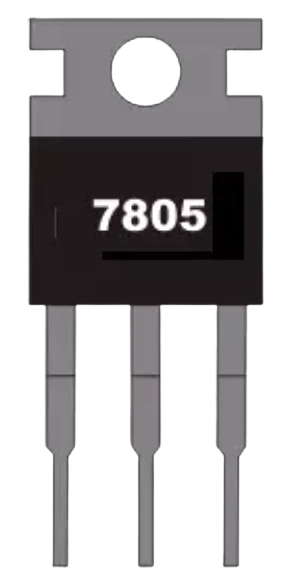
 Design with 7805 in Cirkit Designer
Design with 7805 in Cirkit DesignerIntroduction
The 7805 is a linear voltage regulator that provides a stable output voltage of 5V. It is part of the 78xx series of voltage regulators, which are widely used in electronic circuits for their simplicity and reliability. The 7805 is designed to maintain a constant 5V output regardless of variations in input voltage or load current, within its specified limits. This makes it an essential component for powering microcontrollers, sensors, and other devices that require a consistent 5V supply.
Explore Projects Built with 7805
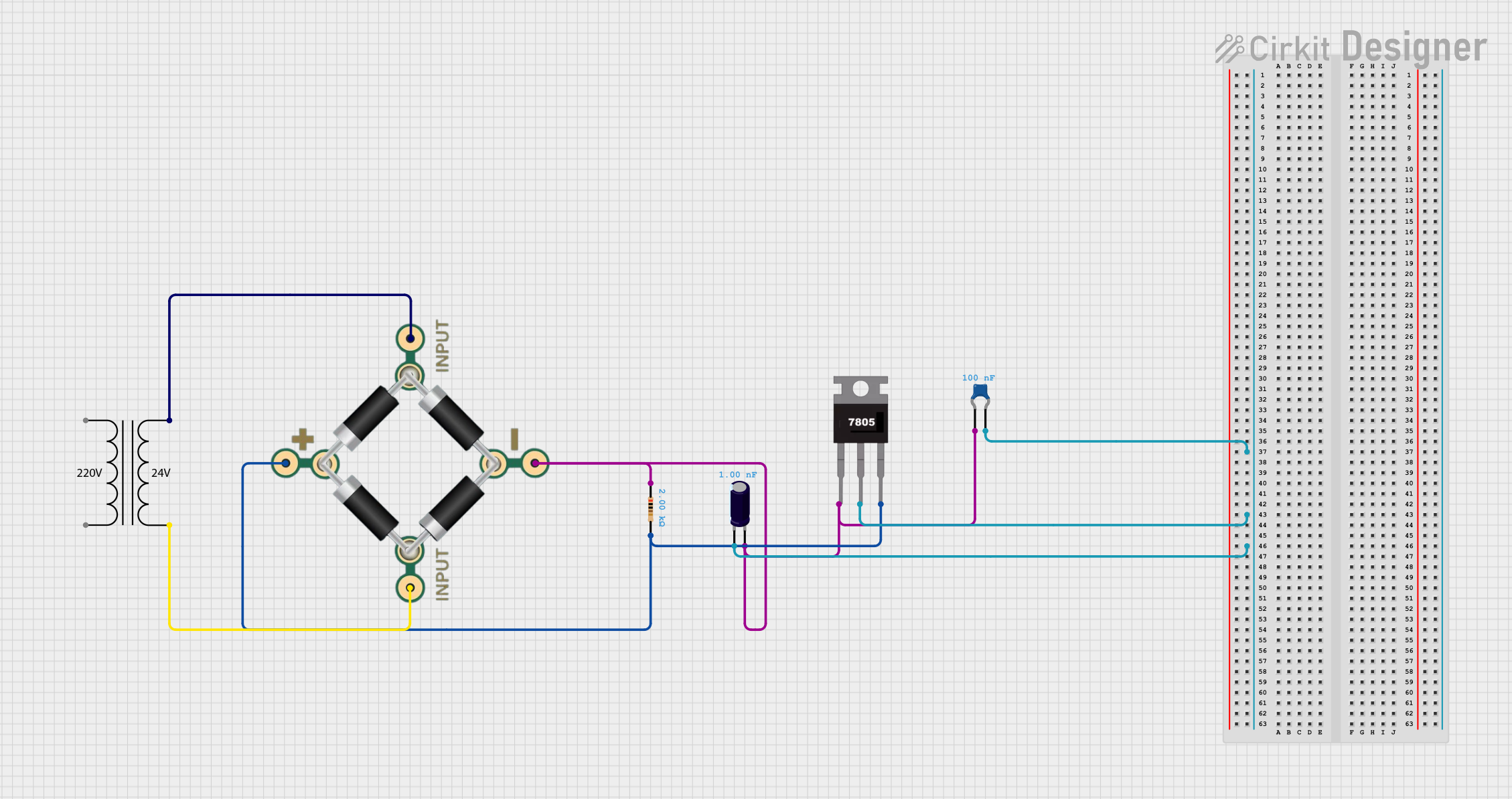
 Open Project in Cirkit Designer
Open Project in Cirkit Designer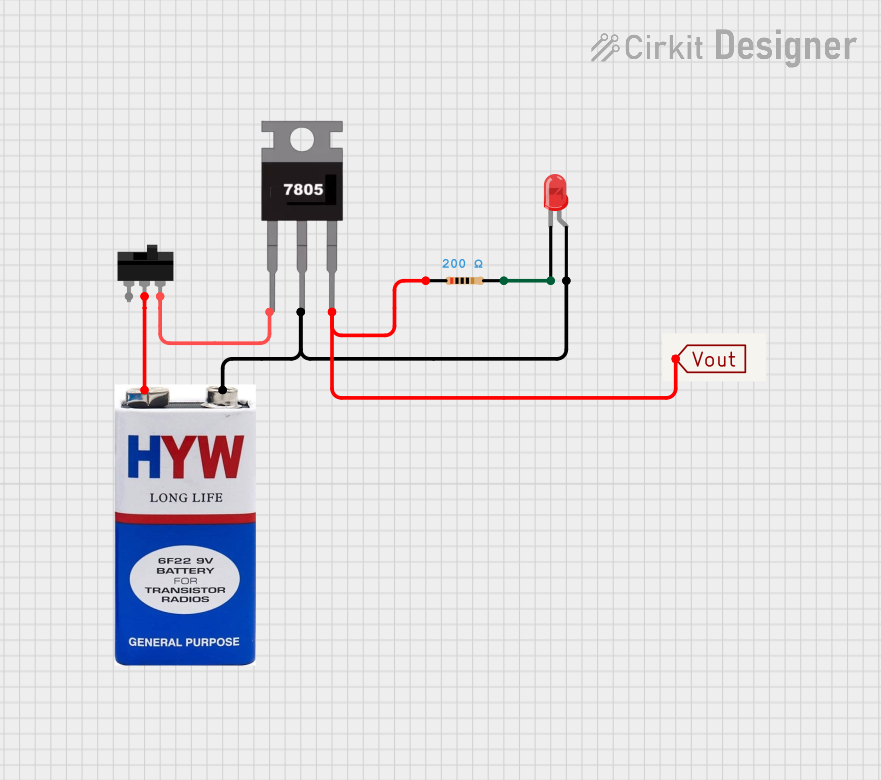
 Open Project in Cirkit Designer
Open Project in Cirkit Designer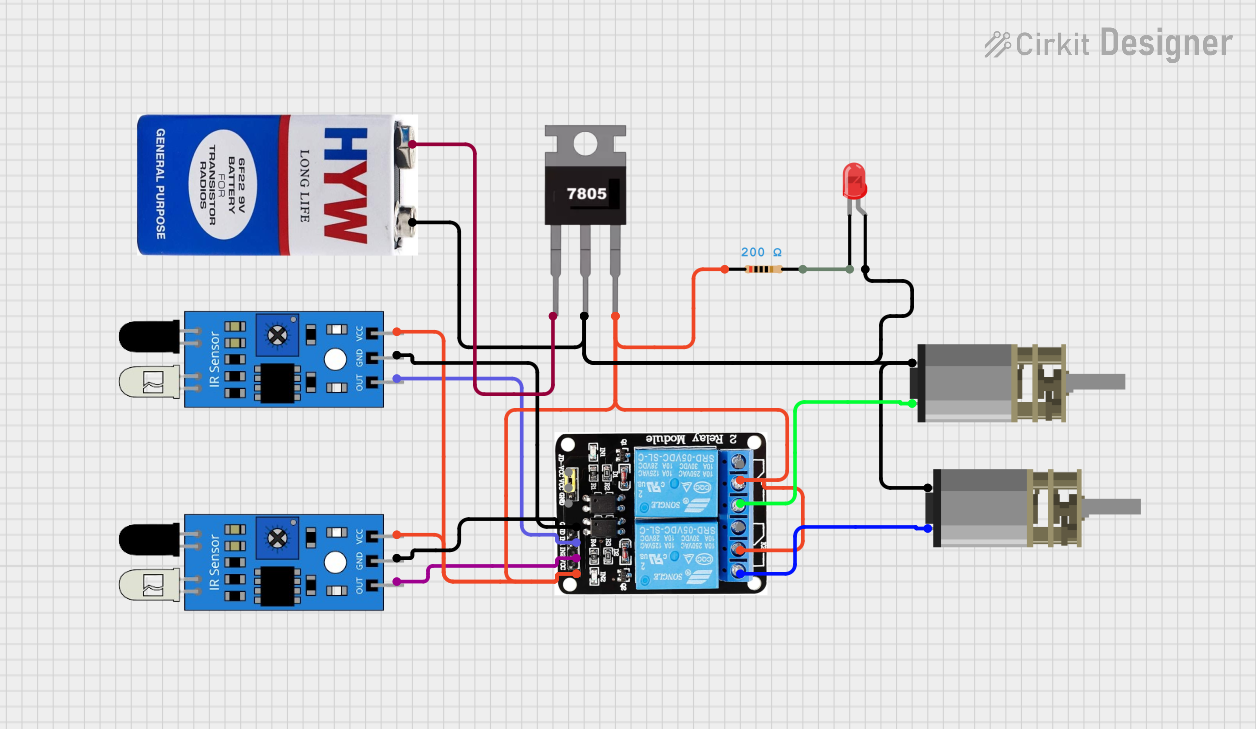
 Open Project in Cirkit Designer
Open Project in Cirkit Designer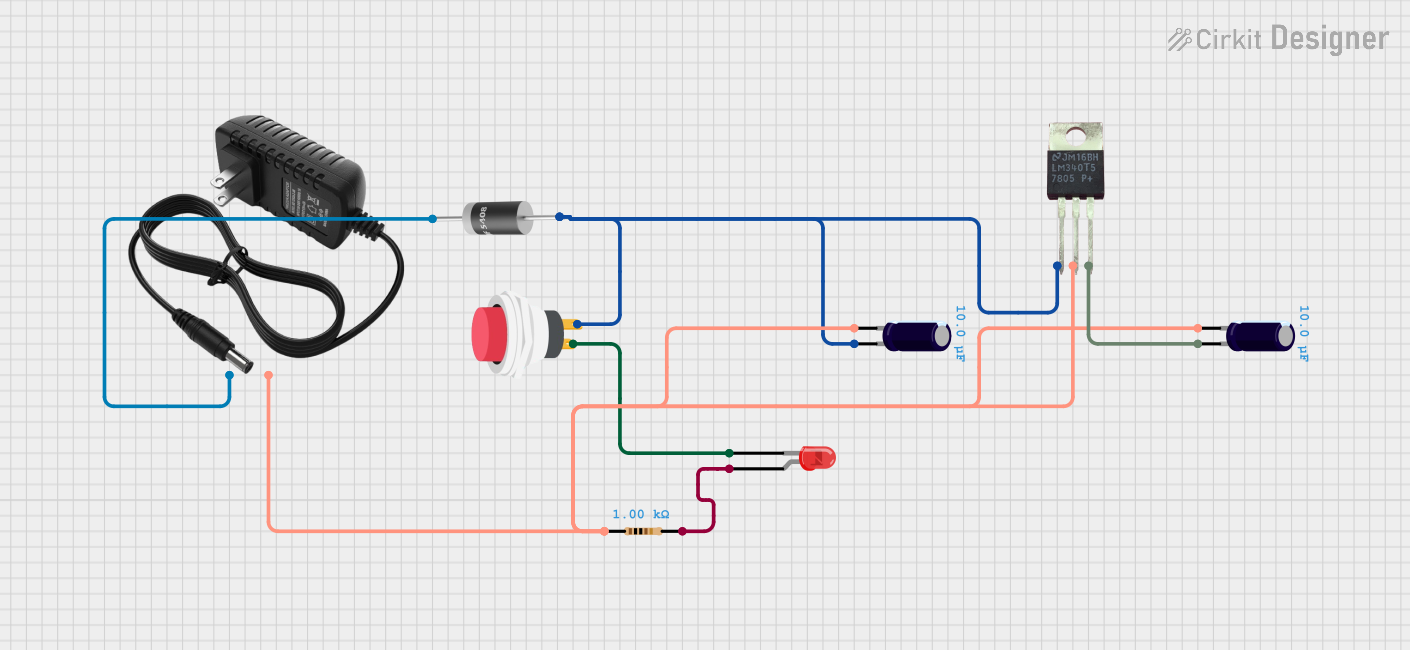
 Open Project in Cirkit Designer
Open Project in Cirkit DesignerExplore Projects Built with 7805

 Open Project in Cirkit Designer
Open Project in Cirkit Designer
 Open Project in Cirkit Designer
Open Project in Cirkit Designer
 Open Project in Cirkit Designer
Open Project in Cirkit Designer
 Open Project in Cirkit Designer
Open Project in Cirkit DesignerCommon Applications and Use Cases
- Powering microcontrollers (e.g., Arduino, PIC, AVR)
- Supplying 5V to sensors, modules, and ICs
- Voltage regulation in battery-powered devices
- Prototyping and breadboard circuits
- DIY electronics projects
Technical Specifications
The following table outlines the key technical details of the 7805 voltage regulator:
| Parameter | Value |
|---|---|
| Output Voltage | 5V ± 2% |
| Input Voltage Range | 7V to 35V |
| Maximum Output Current | 1.5A (with proper heat dissipation) |
| Dropout Voltage | 2V (typical) |
| Quiescent Current | 5mA (typical) |
| Operating Temperature | 0°C to 125°C |
| Package Types | TO-220, TO-92, SMD |
Pin Configuration and Descriptions
The 7805 typically comes in a TO-220 package with three pins. The pinout is as follows:
| Pin Number | Name | Description |
|---|---|---|
| 1 | Input | Connect to the unregulated input voltage (7V–35V). |
| 2 | Ground | Common ground for input and output. |
| 3 | Output | Provides a regulated 5V output. |
Usage Instructions
How to Use the 7805 in a Circuit
- Input Voltage: Connect the input pin (Pin 1) to a DC voltage source ranging from 7V to 35V. Ensure the input voltage is at least 2V higher than the desired 5V output (to account for dropout voltage).
- Ground Connection: Connect the ground pin (Pin 2) to the circuit's ground.
- Output Voltage: Connect the output pin (Pin 3) to the load that requires a 5V supply.
- Capacitors: Add capacitors to stabilize the voltage and reduce noise:
- Place a 0.33µF capacitor between the input pin and ground.
- Place a 0.1µF capacitor between the output pin and ground.
- Heat Dissipation: If the load current exceeds 500mA, attach a heatsink to the 7805 to prevent overheating.
Example Circuit
Below is a simple circuit diagram for using the 7805:
+7V to +35V
|
|
[C1] 0.33µF
|
|-----> Pin 1 (Input)
|
7805
|
|-----> Pin 2 (Ground) -----> GND
|
[C2] 0.1µF
|
|-----> Pin 3 (Output) -----> +5V
Using the 7805 with an Arduino UNO
The 7805 can be used to power an Arduino UNO by providing a stable 5V supply to its 5V pin. Below is an example Arduino code to blink an LED when powered by the 7805:
// Simple LED Blink Example
// This code assumes an LED is connected to pin 13 of the Arduino UNO.
void setup() {
pinMode(13, OUTPUT); // Set pin 13 as an output pin
}
void loop() {
digitalWrite(13, HIGH); // Turn the LED on
delay(1000); // Wait for 1 second
digitalWrite(13, LOW); // Turn the LED off
delay(1000); // Wait for 1 second
}
Important Considerations and Best Practices
- Input Voltage: Ensure the input voltage is at least 2V higher than the output voltage (minimum 7V for a 5V output).
- Heat Management: Use a heatsink if the regulator gets too hot during operation.
- Capacitors: Always use the recommended input and output capacitors to ensure stable operation.
- Current Limit: Do not exceed the maximum output current of 1.5A. For higher currents, consider using a switching regulator.
Troubleshooting and FAQs
Common Issues and Solutions
Output Voltage is Not 5V:
- Check the input voltage. Ensure it is within the 7V–35V range.
- Verify the connections and ensure the ground pin is properly connected.
- Add the recommended capacitors to stabilize the output.
Regulator Overheats:
- Attach a heatsink to the 7805 to dissipate heat.
- Reduce the load current if it exceeds 1.5A.
- Ensure proper ventilation around the regulator.
No Output Voltage:
- Check for short circuits or incorrect wiring.
- Verify that the input voltage is present and within the specified range.
Noise or Instability in Output:
- Add or replace the input and output capacitors.
- Ensure the capacitors are placed as close as possible to the regulator pins.
FAQs
Q: Can I use the 7805 to power a 3.3V device?
A: No, the 7805 provides a fixed 5V output. To power a 3.3V device, use a 3.3V regulator like the 7833 or a buck converter.
Q: What happens if the input voltage drops below 7V?
A: The 7805 may fail to regulate properly, and the output voltage will drop below 5V.
Q: Can I use the 7805 with an AC input?
A: No, the 7805 requires a DC input. If using an AC source, first rectify and filter the AC voltage to obtain a DC input.
Q: Is the 7805 suitable for battery-powered applications?
A: The 7805 is not very efficient for battery-powered applications due to its linear regulation. A switching regulator is recommended for better efficiency.
By following this documentation, you can effectively use the 7805 voltage regulator in your electronic projects.